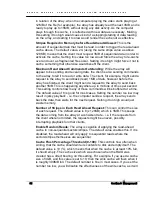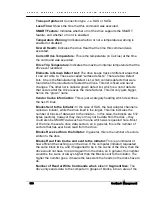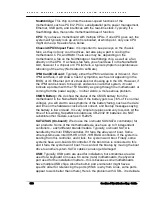
G A L A X Y ® A U R O U R A C O N F I G U R A T I O N A N D S Y S T E M I N T E G R A T I O N G U I D E
99
Section 3 Management
3.1.11
SLOT Details
The slots are the physical drive bays (or drive slots) located in the array itself.
It's important to note that the slot number does not necessarily correspond to
the logical position of a drive within a RAID. For example, you could have a
chassis with 24 slots, but have (2) 12-drive RAIDs defined, each of which, with
a drive 0, 1, 2, etc., but there would only be one slot 1.
For each slot in the array, we see the slot number, drive manufacturer, model
number, firmware revision, capacity (in Gigabytes), the by-id device name,
Linux short device name, and current status of that slot. The SMART button to
the left of each drive takes you to the SMART details for that particular drive
below. When you are finished and wish to return to the NumaRAID Main GUI
screen, you can left-click on the Return to NumaRAID GUI Main Page link at
the bottom of the Slot Details screen.
Modern hard drives have sensors within them that can log and detect
problems, which can cause a drive to prematurely fail. They also run self-
diagnostics and record the results. The output of SMART is different for a
SATA drive versus a SAS drive. Here are some of the things that SMART
might show:
Device:
Shows the manufacturer, model number, and firmware revision for the
device.
Serial Number:
Is the serial number: Note that the actual serial number is just
the rightmost 8 characters. The rest of the string is a manufacturer-unique ID.
Device Type:
Shows the type of the device.
















































